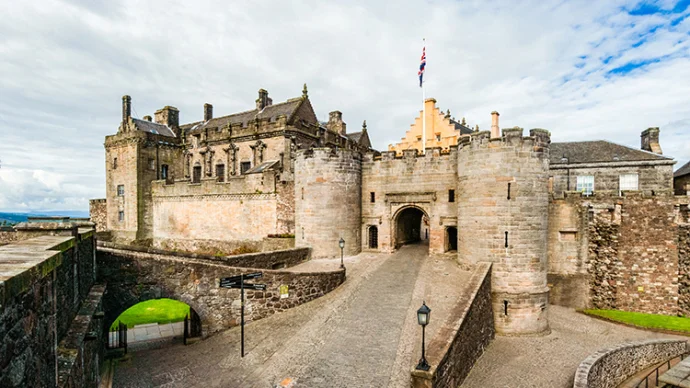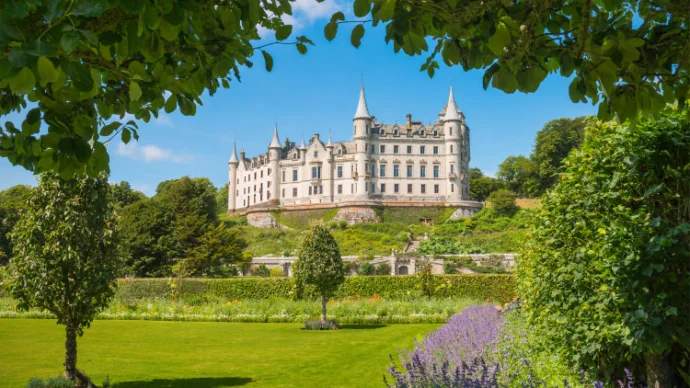
About Stirling Castle
Stirling Castle is an iconic royal palace and stronghold, seen to represent Scottish independence and a focal point for many of the most important events in Scotland’s history. Its imposing position and impressive architecture help make it one of Scotland’s grandest castles.
History of Stirling Castle
Famous Events at Stirling Castle
Stirling Castle was the site of royal deaths such as that of King Alexander I in 1124 and William I in 1214, the subject of a tug of war between the English and the Scottish during the Wars of Scottish Independence and even the scene of an assassination. This latter event, the murder of William the eighth Earl of Douglas, occurred when he was invited to dinner there in 1452. A skeleton found at the castle in the 18th century is believed to have been his.
During the Wars of Scottish Independence, Stirling Castle was fought over by some of the most famous figures in Scottish and English history, including William Wallace and Robert the Bruce.
Royal events at Stirling Castle included the coronation of Mary Queen of Scots (1543) and the baptism of her son, James VI (1566), both at the Chapel Royal.
Strategic Location
At least part of the reason for the prominence of Stirling Castle over the centuries must be attributed to its location. Situated atop the flat top of an ancient volcano, it forms an imposing sight and a formidable stronghold, surrounded on three sides by steep cliffs, which give it a strong defensive position. Furthermore, it is located at a vital strategic point at the centre of various routes across Scotland.
Architecture
The first mention of Stirling Castle dates to 1110, when Alexander I endowed a chapel there, but many believe the site has been fortified since prehistoric times (although this is disputed).
The current grand incarnation of Stirling Castle mostly dates from the 15th and 16th centuries onwards, though a few structures remain from the 14th century, while the outer defences fronting the town date from the early 18th century.
Some of the highlights include the King’s Old Building, constructed in 1496 for James IV, the Great Hall, which was medieval Scotland’s largest banqueting hall built for James IV in 1503 and the Royal Palace, built for James V in around 1540.
One of the most well-known parts of Stirling Castle is its Forework Gate, a turreted stone fortification built for James IV in the early 16th century.
Stirling Castle today
Stirling Castle is a Scheduled Ancient Monument, and is now a tourist attraction managed by Historic Environment Scotland.
Tours around the castle’s buildings and grounds are available – visitors can tour with an audio guide or with a tour guide and there are a range of exhibitions to see. Not least of these is the Regimental Museum, a military museum dedicated to the Argyll & Sutherland Highlanders, and the Castle Exhibition which reveals the castle’s story from its earliest times to the present day.
Getting to Stirling Castle
If travelling by public transport, head to Stirling train station (on Goosecroft Road near the city centre) or bus station, which are both within walking distance of the castle. It’s worth bearing in mind that the castle it is situated up a steep hill.
If travelling by car, head for the car park up Castle Wynd – ensure you book car parking online in advance when booking your entry tickets.
Featured In

Mary Queen of Scots
Discover the historical places relating to Mary Queen of Scots, from Fotheringhay Castle, Lochleven Castle, and more.

10 of the Best Historic Sites in Stirlingshire
From a pineapple-shaped hothouse to an ancient priory in the middle of a lake, Stirling is home to a wealth of unusual and fascinating historic sites.

Scottish Castles
Nestled amongst Scotland's stunning landscapes and historic cities are a number of grand castles. Here's our pick of the best, from the domineering Edinburgh Castle to the picturesque Dunrobin.




















